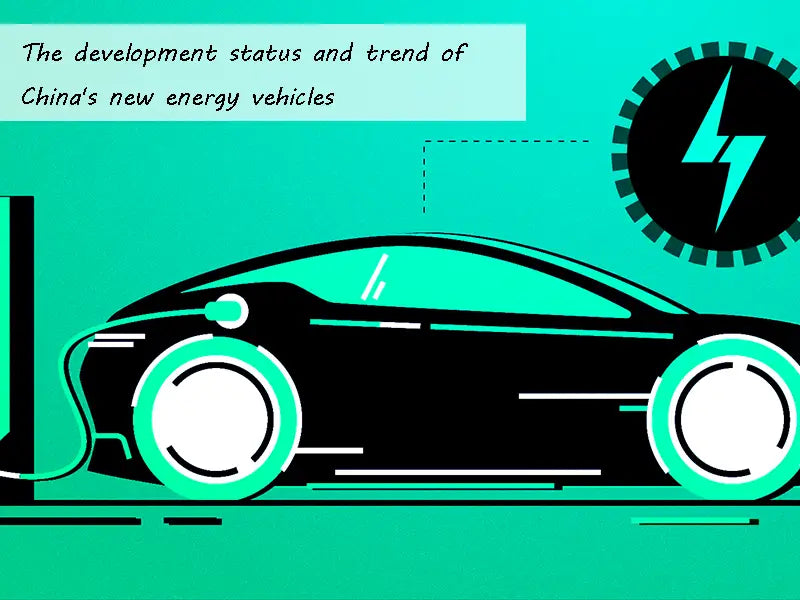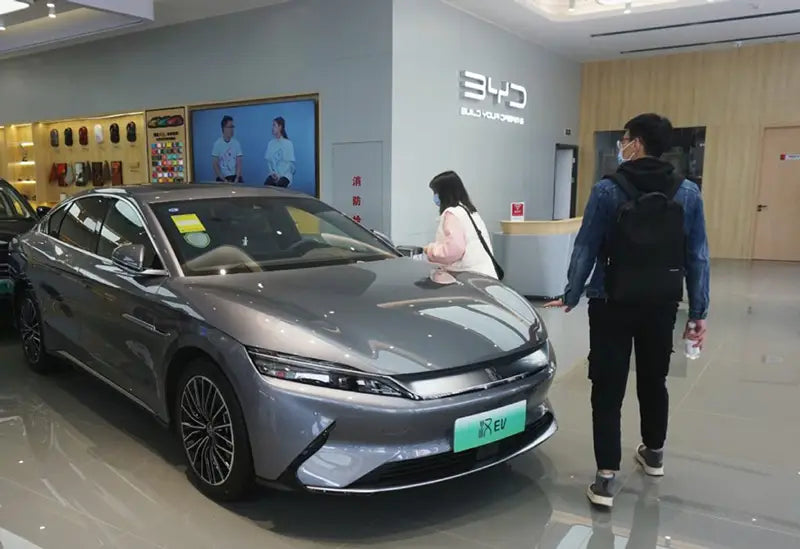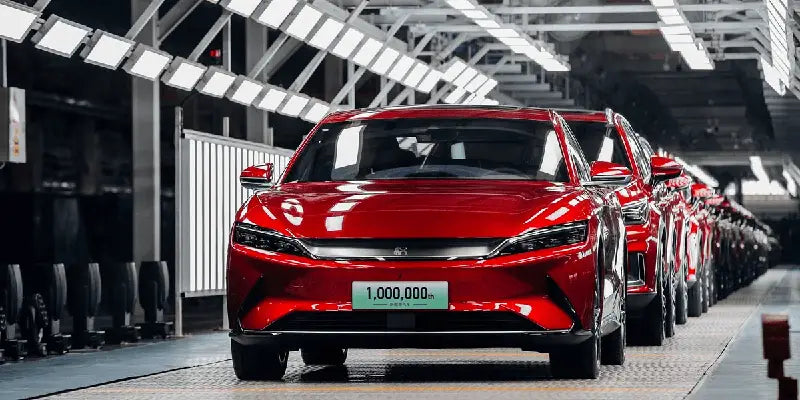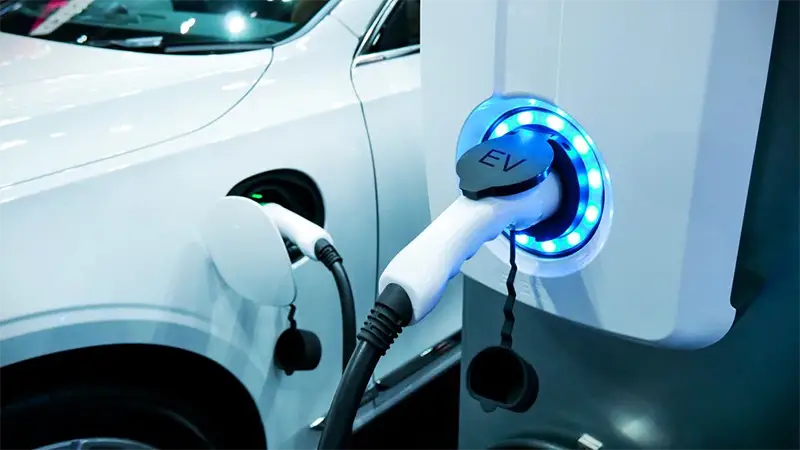
Main content:
After 30 years of rapid development of reform and opening up, China has become the world's second largest automobile market and the third largest automobile manufacturing base. The number of direct and indirect employment in the automobile industry has reached more than 11% of the total number of urban employment in the country. Since 2009, with the release and implementation of China's auto industry revitalization plan, the auto market has rebounded rapidly, with monthly sales surpassing that of the United States at the beginning of the year. The annual production and sales both exceeded the 10 million mark. At the same time, the number of cars in China has reached 50 million, but the annual fuel consumption is close to 60% of the national total of refined oil products. According to the current growth rate and fuel consumption level, the number of cars in China will exceed 150 million by 2020. The annual fuel consumption will exceed 250 million tons. The contradiction between the huge market demand and the severe energy and environmental constraints is extremely sharp. It is imperative to develop China's new energy vehicles and realize the transformation and industrial revitalization of China's new energy vehicles.
China's automobile production was 8.89 million in 2007, 9.35 million in 2008, and more than 13.5 million in 2009. Production in 2010 is expected to expand to 14 million vehicles. With this rapid growth, the demand for tires has also risen sharply. In 2010, the Chinese tire market is expected to surpass the United States as the world's largest market.
The figure below shows the car ownership and sales in China from 2001 to 2015. It is predicted that the total production capacity of China's top ten automakers will increase from 12 million in 2009 to 21 million in 2012. SAIC plans to increase by 30% by 2012 compared to 2009. China FAW plans to nearly double production capacity.

In 2009, China's new car sales increased by 46% to 13.64 million, surpassing the United States for the first time to become the world's largest auto market. The Chinese market is expected to expand by more than 10% to about 15 million vehicles by 2010.
1. Development Status of New Energy Vehicles in China
Compared with traditional vehicles, China's new energy vehicles development is also at the forefront, and has not lost on the starting line. China's new energy vehicles development goal proposed by Wan Gang, a senior expert in the field of fuel cell vehicles in China and Minister of Science and Technology, is: by 2012, 10% of newly produced vehicles in China are energy-saving and Chinese new energy vehicles. Counting 10 million units, China's new energy vehicles should reach an annual output of 1 million units. China has cost and market advantages, and has the potential and the potential to take a leadership position in the world.
At the Guangzhou Auto Show on November 20, 2008, Kearney, a world-renowned management consulting company, released a research report titled "China's 2020 Alternative Energy Prospects for Cars", evaluating different alternative power technologies in China under three scenarios to 2020. Possible market share in new vehicle sales in 2018. The report shows that by 2020, alternative energy-powered cars will account for 39% of the new car sales in the entire market under the assumption of basic scenarios. Among them, gasoline hybrids are the most advantageous form of alternative energy for new energy vehicles in China, accounting for about 26%. What kind of China's new energy vehicles will be needed in the future should be mainly driven by the market, not by the government. However, the role of the government in the development of new energy vehicles in China cannot be underestimated either.
The report divides the factors that affect consumers' value orientation towards China's new energy vehicles into: total cost of ownership of China's new energy vehicles, performance of China's new energy vehicles, image of China's new energy vehicles, safety of China's new energy vehicles, and China's new energy vehicles. Reliability and convenience of energy vehicles. For example, the cost of China's new energy vehicles, the current cost of electric vehicles is 1/3 higher than that of vehicles of the same level. Therefore, if there is no government support for China's new energy vehicles in terms of taxes and fees, it will be difficult to popularize them. At the same time, the government needs to vigorously develop the charging stations of China's new energy vehicles, otherwise the convenience of China's new energy vehicles will be greatly reduced, such as the image, at present, most of the stars who buy hybrid vehicles in the United States are because they want to use this method. to promote their environmental awareness. Interestingly, in China, Shanxi coal bosses account for a certain proportion of the people who buy hybrid vehicles, and most of them are motivated by curiosity.

The report basically covers the current major solutions for China's new energy vehicles. Including compressed natural gas CNG, China's new energy vehicles have been promoted in taxis and buses; clean diesel power solutions, which currently account for more than 50% of European vehicle power; hybrid vehicles (including gasoline and diesel hybrids) and plug-in power. Hybrid vehicles, currently popularized in the United States and Japan, are more successful; electric vehicles; fuel cell vehicles, etc. In addition, due to the relatively abundant coal reserves in China, methanol extracted from coal is also one of the alternatives to gasoline. However, on the whole, the above solutions are not very mature. For example, in China, both ethanol and methanol as alternative fuels for vehicles have been promoted regionally for a long time, and have caused widespread controversy, but it is still difficult to determine whether they can become mature solutions for popularization in the near future.
Dr. Dai Jiahui, director of Kearney, expressed his opinion in the "Automotive Business Review", saying that at present, China's major automakers and even some small automakers are doing research on China's new energy vehicles, and the fields involved can be said to be blooming in all directions. . They also lag behind foreign manufacturers in the field of hybrid vehicles, and outperform other technologies in the core technologies of electric vehicles such as batteries.
According to the "New York Times" report on April 17, 2009, China has begun to implement a plan to become the world's largest producer of hybrid and electric vehicles. China hopes to increase its annual production capacity of new energy vehicles to 500,000 units by the end of 2011 and become a global leader in this field.
"China has the ability to be a good navigator," said Tulacas, director of China policy at GM. "The New York Times" said that in 2008, China produced a total of 2,100 hybrid or electric vehicles. The newspaper said that China's intentions are clear. This Chinese new energy vehicle plan can not only lead the global electric vehicle industry, increase employment and expand exports, but also reduce urban environmental pollution and reduce its dependence on oil exports from the Middle East. The Chinese government's plan implies that the two giants of the US auto industry: In the future of automotive technology, the US auto industry, which is on the verge of bankruptcy, will suffer from greater external competition pressure.

In addition to mass production, local governments in 13 Chinese cities plan to subsidize fuel for hybrid or electric taxis. State Grid Corporation of China has already planned to build vehicle charging stations in Beijing, Shanghai and Tianjin. The Chinese government has also increased funding for electric vehicle design research.
During the Two Sessions in 2009, Chinese General Secretary Hu Jintao said, "The development of China's new energy vehicles represents the development direction of the world's auto industry and is also in line with China's national conditions." "China's auto industry is in a stage of rapid development. On the one hand, the auto industry It has become a pillar industry; on the other hand, with the development of the automobile industry, the problems of energy consumption and environmental pollution have become increasingly prominent.” This is very consistent with the keynote of the recent auto industry being included in the ten major industrial revitalization plans, indicating that the role of the upstream and downstream industrial chains of the auto industry in stimulating domestic demand and driving economic growth has been affirmed by high-level officials. However, under the realistic conditions that China's per capita resources are not abundant, if every household in the United States and other western developed countries can own a car on average, then the total number of cars in the country's 305 million households is far more than The number of 240 million U.S. vehicles, the world's largest, will be a big challenge to China's energy security, and it will also bring unprecedented pressure on the world's energy supply, and will inevitably trigger the existing energy forces of major industrial countries. The re-division of China will bring various unsettling factors to China's international situation. Therefore, in the era of internal combustion engines that are still dominated by petroleum and fossil fuels, it is basically impossible for China to popularize new energy vehicles in China. Only by starting with China's new energy vehicles can this increasingly apparent contradiction be resolved. Therefore, the issue of the development of China's new energy vehicles raised by the general secretary has indeed reached the point of urgency.
In the past 10 years, the National "863 Plan" and other scientific and technological plans organized and implemented by the Ministry of Science and Technology have invested a total of nearly 2 billion yuan to guide and support China's new energy vehicles. China Energy Conservation and China's new energy vehicles technology research and development has made significant progress, basically mastered new energy vehicle technology, established a power technology platform for energy saving and new energy vehicles, formed a relatively complete system of key components, and developed a number of energy-saving and new energy vehicles. The products of China's new energy vehicles have realized the capacity of small batches of complete vehicles.
At the 13th Shanghai International Automobile Industry Exhibition in May 2009, China's new energy vehicles became one of the highlights of the major automakers competing to display. SAIC Motor exhibited 3 Chinese new energy vehicles of its own brand. Their goal is to launch hybrid cars in 2010, and plug-in hybrid cars and pure electric cars in 2012. Nanjing Iveco, a subsidiary of SAIC Motor, exhibited its first electric light bus, which has been mass-produced and has a driving range of 220km on a single charge. The first 10 vehicles have been delivered, and it was identified as the only light-duty vehicle for the 2010 Shanghai World Expo. BYD has launched 3 China's new energy vehicles. Among them, the E6 pure electric car has a driving range of up to 400km, and the energy consumption of 100km is about 20kW.h, and the cost is equivalent to 1/4~1/3 of fuel. Nissan will also promote electric vehicles on a large scale in China.

2. The development trend of new energy vehicles in China
In China, with the introduction of the automobile industry revitalization plan and the introduction of supporting policies for new energy vehicles, the research and development of domestic hybrid electric vehicles, pure electric vehicles and fuel cell vehicles is in full swing, and drives the powertrain, drive motor and chemical battery. and other industrial technology research.
The development of key technical standards for new energy vehicles in China, which was undertaken by the Ministry of Science and Technology of the Ministry of Science and Technology's "863 Plan" and the Shanghai Municipal Science and Technology Commission's "Innovation Action Plan" special project, was accepted by the expert group. This is the first batch of China's new energy vehicles standards formulated in China. The key technical standards of China's new energy vehicles that have passed the acceptance inspection this time are: the national standard of "General Safety of Fuel Cell Vehicles", the national standard of "Terminology of Fuel Cell Vehicles", and the "Damaldehyde Filling Port for Quick Plug-in Vehicles". Industry standard, "Technical Conditions for DME Vehicle Special Device" industry standard, "Safety Requirements for DME Vehicle Special Device" industry standard. The standard has certain advanced nature, practicability and good operability. The compilation of the five standard editions conforms to the provisions of GB/T1.1 and other relevant standards, which will help accelerate the promotion of fuel cell vehicles, hybrid electric vehicles, Demonstration and industrialization of DME vehicles. These five standards will be issued and implemented by the National Standardization Administration.
In line with the trend of the world's auto industry development under the background of climate change, SAIC Motor will successively invest 6 billion yuan in research and development and production of new energy vehicles in China from 2009 to 2011. The 6 billion yuan investment is divided into three parts: 2 billion yuan is used to set up a new energy vehicle research and development company to solve the technical bottleneck of new energy vehicles. This company has been established and put into operation; another 2 billion yuan is used to produce China's new energy vehicles. Parts of energy vehicles; the other 2 billion yuan will be used to build vehicle production bases. SAIC's plan is to put on the market in batches of mid-hybrid hybrid cars with comprehensive fuel savings of 20% to 30% in 2010, and to launch plug-in strong hybrid cars and pure electric vehicles with fuel savings of more than 50% in 2012.
Taking China's new energy vehicles as an example, the industrialization of lithium battery electric vehicles has been included in Beijing's overall transportation development plan and is planned. The 20 fuel cell vehicles provided by Shanghai, after running 73,000 km with zero failures at the Olympic Games, did not "successfully retire", but went to California to continue to accept the driving "test". As of February 2009, each vehicle It has driven more than 700km on the dedicated test section. If it passes the test, it will obtain the relevant certification in the United States, which will provide an uncertain foundation for the development of foreign markets for fuel cell vehicles.
From 2009 to 2012, Beijing will realize the application scale of 5,000 new energy vehicles in total. At the same time, 4 charging stations for pure electric vehicles will be built, and the locations will be selected near the Fourth Ring Road in Beijing to achieve an even distribution in the four urban areas of east, south, west and north. At this stage, Beijing, as the first batch of demonstration cities for the "Ten Cities, Thousand Vehicles" project, has planned to expand the application of Chinese new energy vehicles such as hybrid and pure electric buses in the field of urban public transportation, and focus on the experimental application of electric sanitation vehicles in the field of sanitation. Realize the application scale of China's new energy vehicles to 5,000, and build charging stations for electric vehicles in different locations. The Beijing Municipal Science and Technology Commission will also discuss with the electric power and petrochemical departments, and strive to realize the use of existing gas stations to build rapid replacement charging stations, so that the functions of gas stations and charging stations can be combined into one, and in the process of planning for new urban areas and renovation of old urban areas. , and consider the construction of new energy vehicle infrastructure in the future.
Drawing on the experience of Beijing, Shanghai has made a good preparation for the "post-Expo era". Taking China's new energy vehicles as an example, 1,000 Chinese new energy vehicles will be demonstrated in and out of the Expo site during the Expo. Among them, 200 fuel cell vehicles and 300 electric vehicles will present the promise of "zero emission" for transportation in the park; and 500 hybrid vehicles will run on the periphery of the park. After the World Expo is over, hybrid vehicles and electric vehicles can be used in urban public transportation systems, while fuel cell vehicles will continue to study their reliability, and supporting work including the layout design of hydrogen refueling stations will also be launched ahead of schedule. Behind it is that the whole city has made a plan, and "vacant seats are waiting" for the debut of China's new energy vehicles: According to the plan, 10% of the seats in the annual production of Shanghai Auto in 2012 will be given way to China's new energy vehicles, and Shanghai will save fuel for one year. 78 million L, reducing CO2 emissions by 230,000 tons. According to the requirements of "Shanghai New Energy Vehicle Promotion Project Guide" (2006-2008), before the World Expo, Shanghai will set up at least 2 taxi fleets consisting of hybrid cars, each with no less than 30 vehicles.

In early 2010, the Ministry of Science and Technology announced a new plan to vigorously promote the commercialization of China's new energy vehicles. The plan, named 2010 "Ten Cities, Thousand Vehicles", will put 1,000 Chinese new energy vehicles into operation in each of China's 10 major cities within two years. In mid-April 2009, the technical exchange meeting on power lithium-ion battery and electric vehicle technology and industrial development indicated that the Ministry of Finance and the Ministry of Science and Technology will implement the "Ten Cities, Thousand Vehicles" energy-saving and China's new energy vehicle plan, which will be used for 3 to 4 years. At the same time, 10 cities will be developed every year, and each city will launch no less than 1,000 Chinese new energy vehicles for demonstration operation. This plan involves public areas such as public transportation, taxis, public affairs, municipal administration, and postal services in large and medium-sized cities. At least 60,000 energy-saving and Chinese new energy vehicles will be used. It is said to be the largest and most important of the many plans being pursued by the Ministry of Science and Technology. The central government has arranged subsidy funds to support the demonstration and promotion of energy-saving and China's new energy vehicles in large and medium cities, which shows that the industrialization of China's new energy vehicles has accelerated again. China's new energy vehicles are an effective means to expand domestic demand and realize the leapfrog development of China's auto industry, as well as a major measure to promote energy conservation and emission reduction and achieve scientific development. Energy saving and the development of China's new energy vehicles industry will provide a rare historical opportunity for the development of lithium-ion power lithium battery technology and industry. The promotion policies for the electric vehicle industry, the requirements of electric vehicles for power lithium battery systems, the key technologies of power lithium batteries and the development of the electric vehicle industry are all to implement the spirit of "green, environmental protection, energy saving, and high efficiency" and promote China's power lithium battery systems. With the rapid development of the electric vehicle industry.
According to the concept of the Ministry of Science and Technology, by 2012, China's new energy vehicles should strive to account for 10% of the automobile market share. If there are 1 million energy-efficient hybrid and electric vehicles by then, 780 million liters of gasoline can be saved a year.
The current situation of domestic competition for development can give full play to China's institutional advantages of concentrating on major events, implement a major strategy to solve China's energy crisis by comparing the successful model of developing large aircraft, and set up China's new energy vehicles company as soon as possible. The core technology, fully owns the independent intellectual property rights of new energy vehicles, and seizes the opportunity in the domestic and foreign markets.

China has the confidence to achieve the goals set, and China has many favorable conditions. First, after nearly 10 years of efforts, China has established research and development focusing on hybrid electric vehicles, pure electric vehicles, and fuel cell vehicles, and focusing on multi-energy power control systems, drive motors, power batteries, and key components of fuel cells. It has mastered the key technologies for the development of electric vehicles, formed the development capabilities of various types of electric vehicles, and realized the independent development and commercialization of key components of electric vehicles. Especially in the research and development and application of lithium-ion power batteries in the forefront of the world. At present, Tianjin has professional research institutions for lithium ion development, vehicle application institutions, vehicle R&D institutions and some large-scale projects are being implemented. Second, China has taken the lead in launching the demonstration project of "Ten Cities Driven Vehicles" new energy vehicles to promote electric vehicles on a large scale. The first batch of Chinese new energy vehicles has already started operation in 13 cities across the country. By 2012, there will be more than 60,000 vehicles in operation, and the construction of related infrastructure is accelerating. The Chinese government will continue to adhere to the strategy of giving priority to public transportation and will give priority to promoting electric vehicles in the field of public transportation. Third, it has material resource advantages and industrial advantages for key components of electric vehicles. China ranks first in the world in rare earth reserves and second in lithium reserves in the world. China's new energy vehicles market is the world's largest producer and largest market for light electric vehicles such as electric vehicles and electric motorcycles. Lithium-ion batteries and rare earth magnetos have obvious cost advantages, and a number of large-scale production projects for vehicle batteries and motors have been implemented. Fourth, China has market and cost advantages. China's new energy vehicles market is huge and diversified, and there is a real demand for electric vehicle products. China can take large and medium-sized passenger cars and small passenger cars as a breakthrough to realize the industrialization strategy of crowding at both ends, and gradually promote the industrialization of electric vehicles.